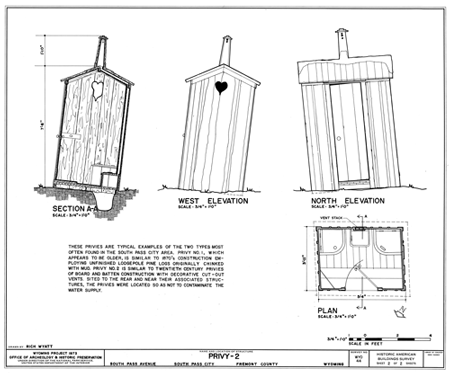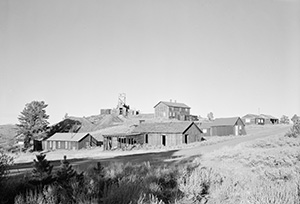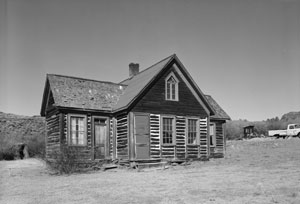South Pass City, Wyoming
HABS WY-27
HABS WY-29
HABS WY-30
HABS WY-31
HABS WY-32
HABS WY-33
HABS WY-34
HABS WY-35
HABS WY-36
HABS WY-37
HABS WY-38
HABS WY-39
HABS WY-40
HABS WY-41
HABS WY-42
HABS WY-43
HABS WY-44
HABS WY-45
HABS WY-46
HABS WY-47
HABS WY-48
HABS WY-49
HABS WY-50
HABS WY-56
HABS WY-57
HABS WY-58
Birthplace of Women's Suffrage
South Pass City boomed in 1867 with the discovery of gold in the Wind River Mountains. Within a year it boasted over 250 buildings and with over 1,000 people calling the city their home. The Carissa Mine, South Pass City's principal mine, produced more than $15,000 dollars worth of gold by 1868. However, like many gold rush cities, South Pass City's prestige and population quickly dwindled as residents left the area in search of gold elsewhere. By 1872, the population consisted of only a few hundred people. The impact of South Pass City on American politics proved more lasting.
During the heyday, in 1869, William Bright, a saloon keeper and mine owner represented South Pass City during Wyoming's First Territorial Legislature. Bright introduced a women's suffrage bill. The bill was passed and signed by Governor Campbell on December 10, 1869. Wyoming became the first state in the United States that gave women the right to vote. Thus, South Pass City is known as the "birthplace of the women's suffrage movement." In February 1870, South Pass City resident Esther Hobart Morris was appointed Justice of the Peace. Morris's appointment made her the first woman to hold public office in the United States. During her eight month tenure she tried 27 cases. South Pass City never returned to its gold rush heights, but remains a seminal site in American history as well as women's history.
In 1966, the Wyoming's 75th Anniversary Commission purchased South Pass City as a birthday present for the citizens of the state. The last 35 years have seen South Pass City become one of the most accurately restored and authentically exhibited outdoor museums in the West. Seventeen of the site's 23 original structures have been restored and exhibited, with many of the site's 30,000 artifacts exhibited in their original buildings. In 1961, the community was designated a National Historic Landmark and additional documentation on the district was listed on the National Register of Historic Places in 1970. The Historic American Buildings Survey (HABS) documented the mines and the surrounding buildings in 1973-74 in cooperation with the Wyoming Recreation Commission. Today, visitors are welcome to take a tour of the town and visit the renovated buildings. The Visitor Center and exhibit buildings are open May 15-September 30.









